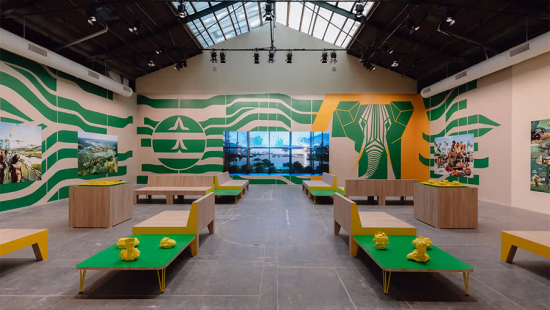Cornell AAP Faculty and Alumni Respond to the Venice Architecture Biennale's Call to Reflect and Reimagine
Exploring themes of decolonization and decarbonization, the 2023 Venice Architecture Biennale, curated by architect and scholar Lesley Lokko, centers the work of Africa and the African diaspora.
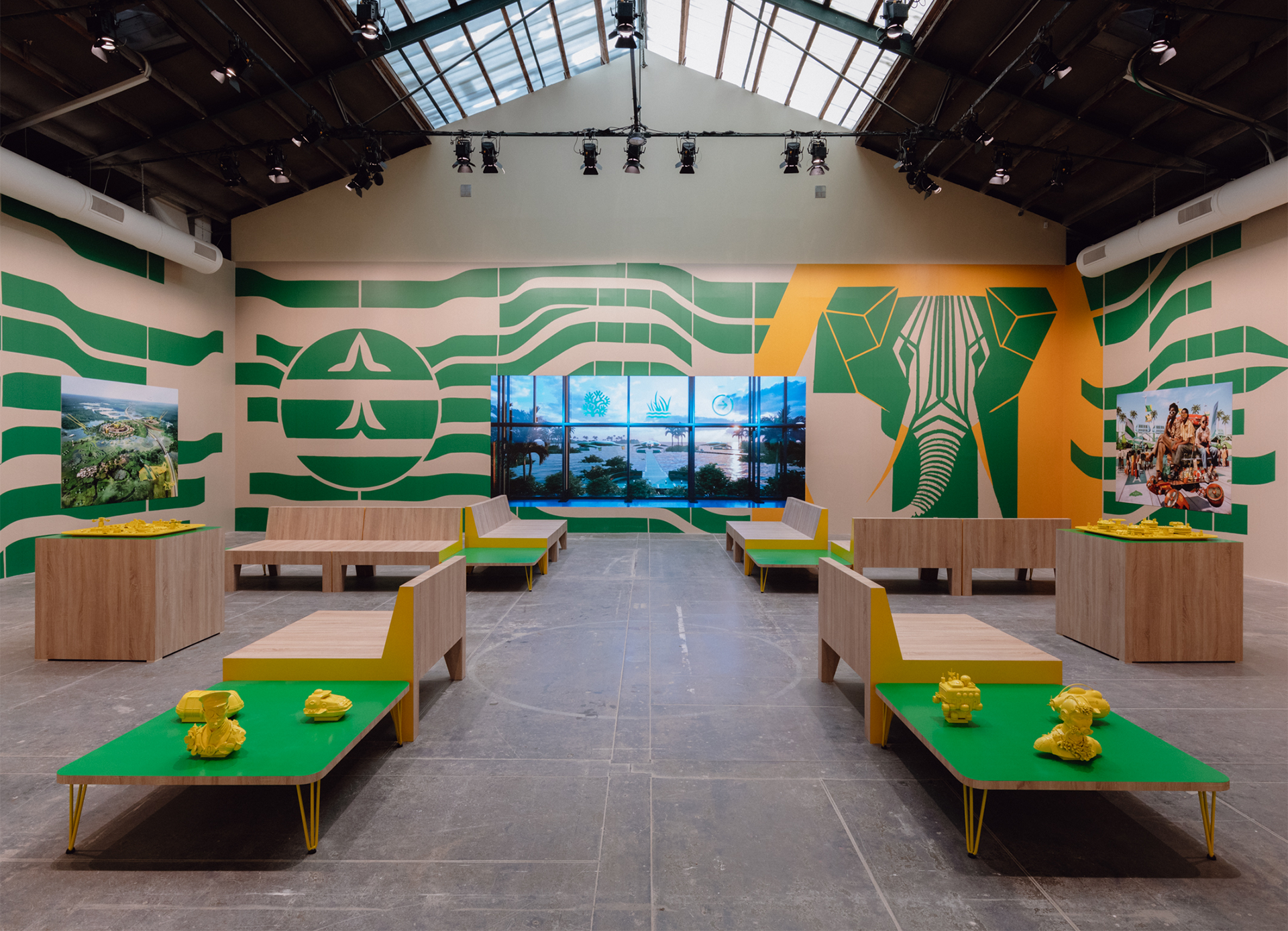
ACE/AAP, a multimedia installation by Olalekan Jeyifous (B.Arch. '99). image / Matteo de Mayda, courtesy La Biennale di Venezia
The 2023 Venice Architecture Biennale which opened on May 20 is making headlines for providing a remarkable showcase of new voices and fresh architectural ideas, with a particular spotlight on Africa.
Scottish-Ghanaian architect and scholar Lesley Lokko curated this year's event, titled "The Laboratory of the Future," which runs until November 26. Notably, of the 89 invited participants, more than half are from Africa or the African Diaspora, the gender split is 50/50, and the average age is 43. Yet "central to all the projects is the primacy and potency of one tool: the imagination," says Lokko. "It is impossible to build a better world if one cannot first imagine it."
AAP architecture faculty and alumni are participating in this conversation, exploring this year's twin themes of decolonization and decarbonization through exhibits and instructional roles. During an opening day ceremony, Olalekan Jeyifous (B.Arch. '99) was awarded the Silver Lion in recognition of his eye-catching multimedia installation ACE/AAP, which imagines a departure lounge for a fictional African transportation system bathed in bright greens and yellows.
*
Olalekan Jeyifous (B.Arch. '99)
ACE/AAP: Force Majeure, Central Pavilion – Giar
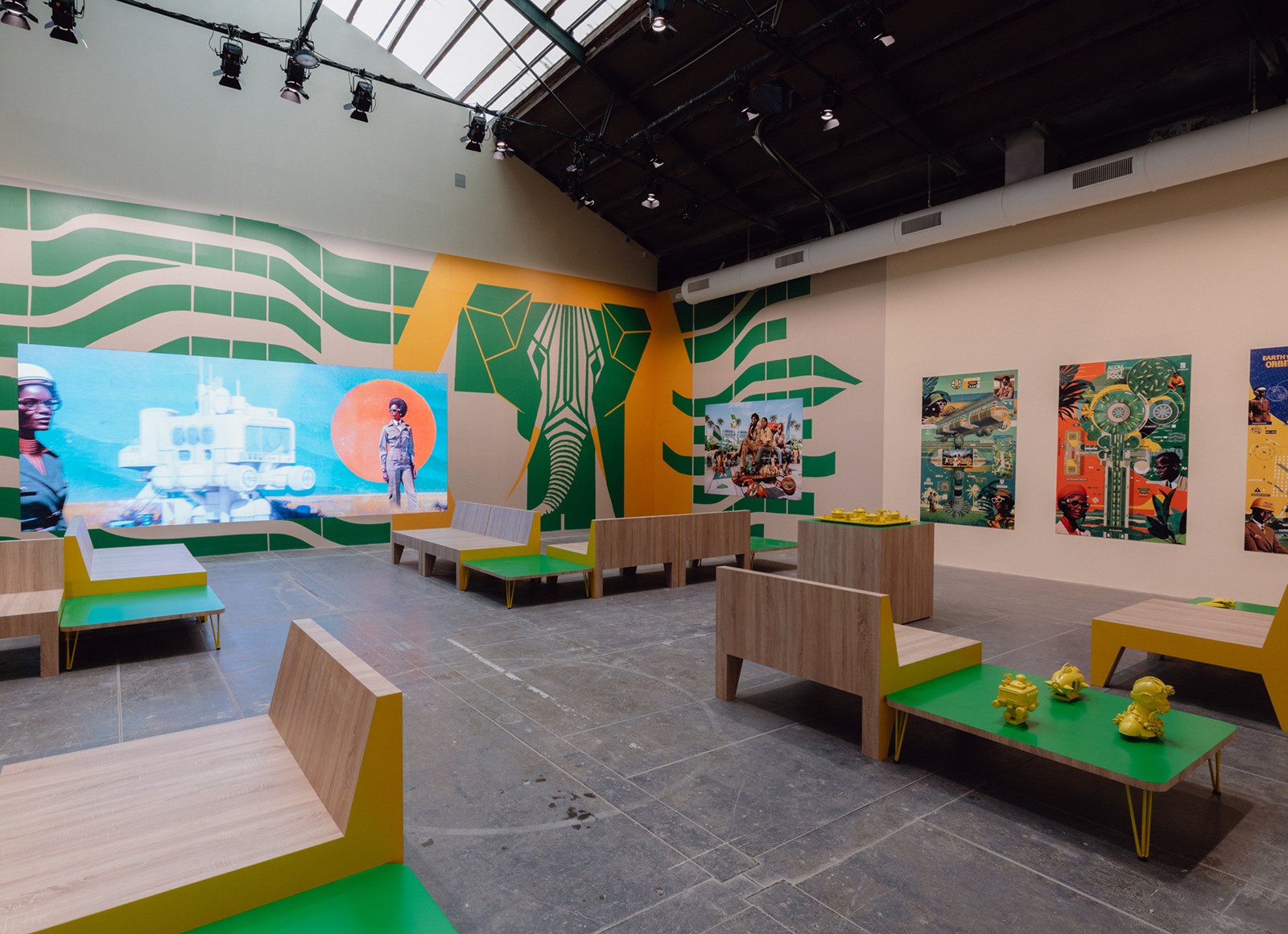
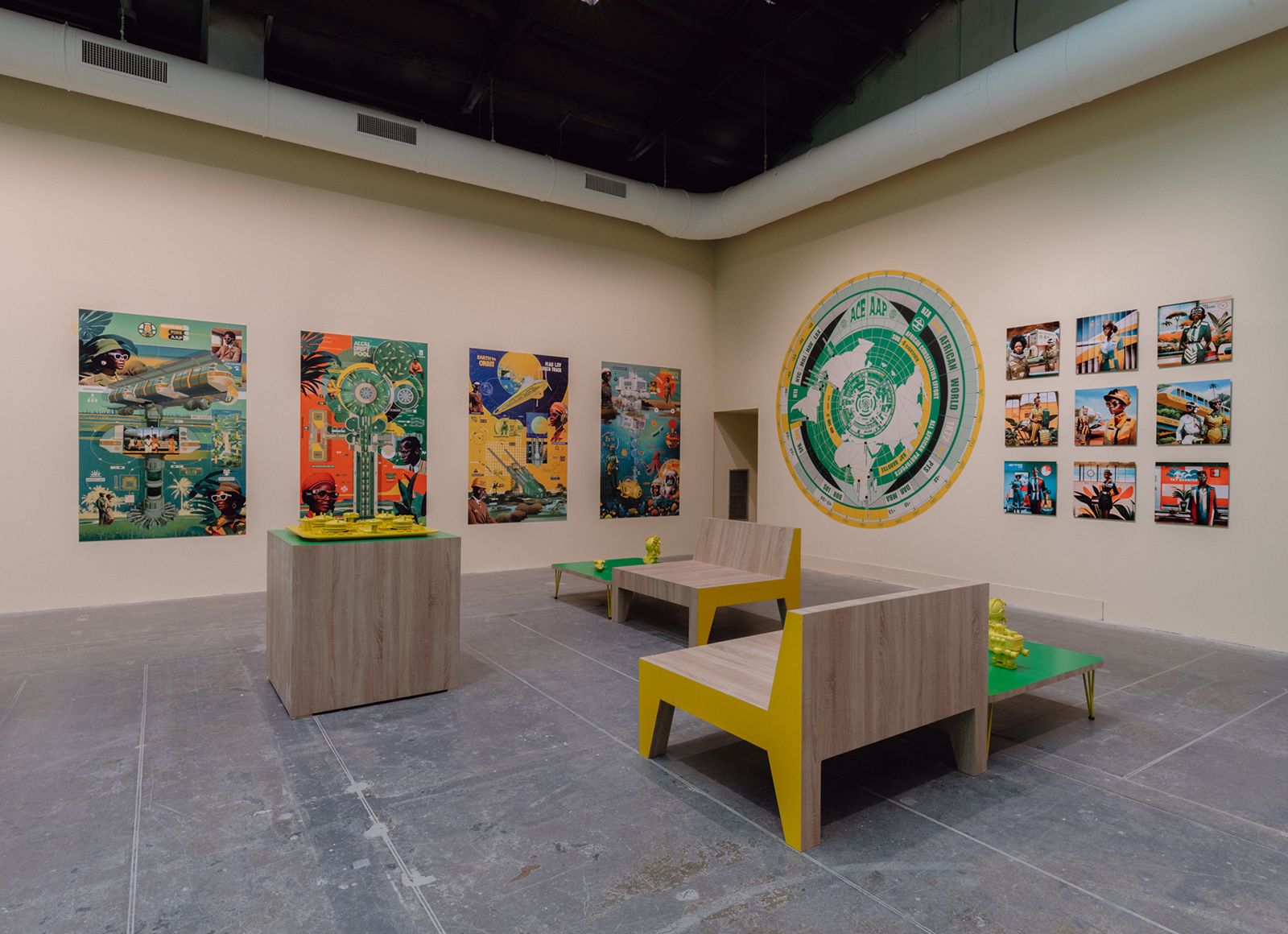
A retrofuturist African eco-fiction, Jeyifous's installation, ACE/AAP, proposes an alternate history that repairs the damage done to the African continent's ecoregions by former colonial powers. In this timeline, the African Conservation Effort (ACE) has applied Indigenous knowledge systems to develop advanced networks that synthesize renewable energy and green technologies. The All-Africa Protoport (AAP), a flagship development, is a network of sprawling low-impact, zero-emission travel complexes situated off the coasts of major ports throughout the world including Lagos, Mombasa, Port Said, Dar es Salaam, Durban, Salvador de Bahia, New York, Los Angeles, Port-Au-Prince, Barranquilla, Havana, and Montego Bay. Viewers can explore this narrative as they visit an AAP departure lounge "located" in the Barotse Floodplain in Zambia's Western Province.
Dream The Combine: Jennifer Newsom, Assistant Professor, Architecture; Tom Carruthers, Assistant Professor of the Practice, Architecture
afterimages: Dangerous Liaisons, Arsenale
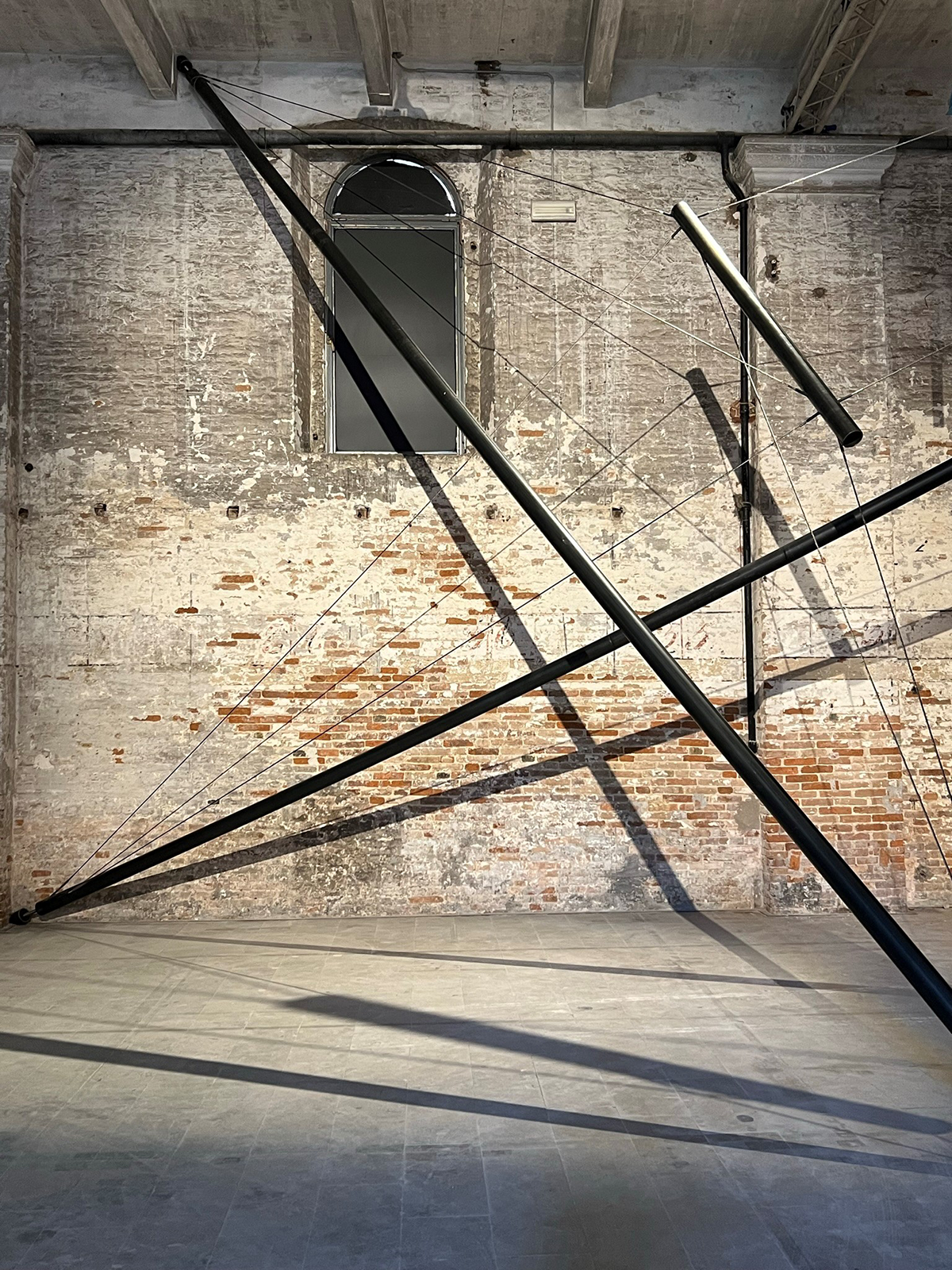
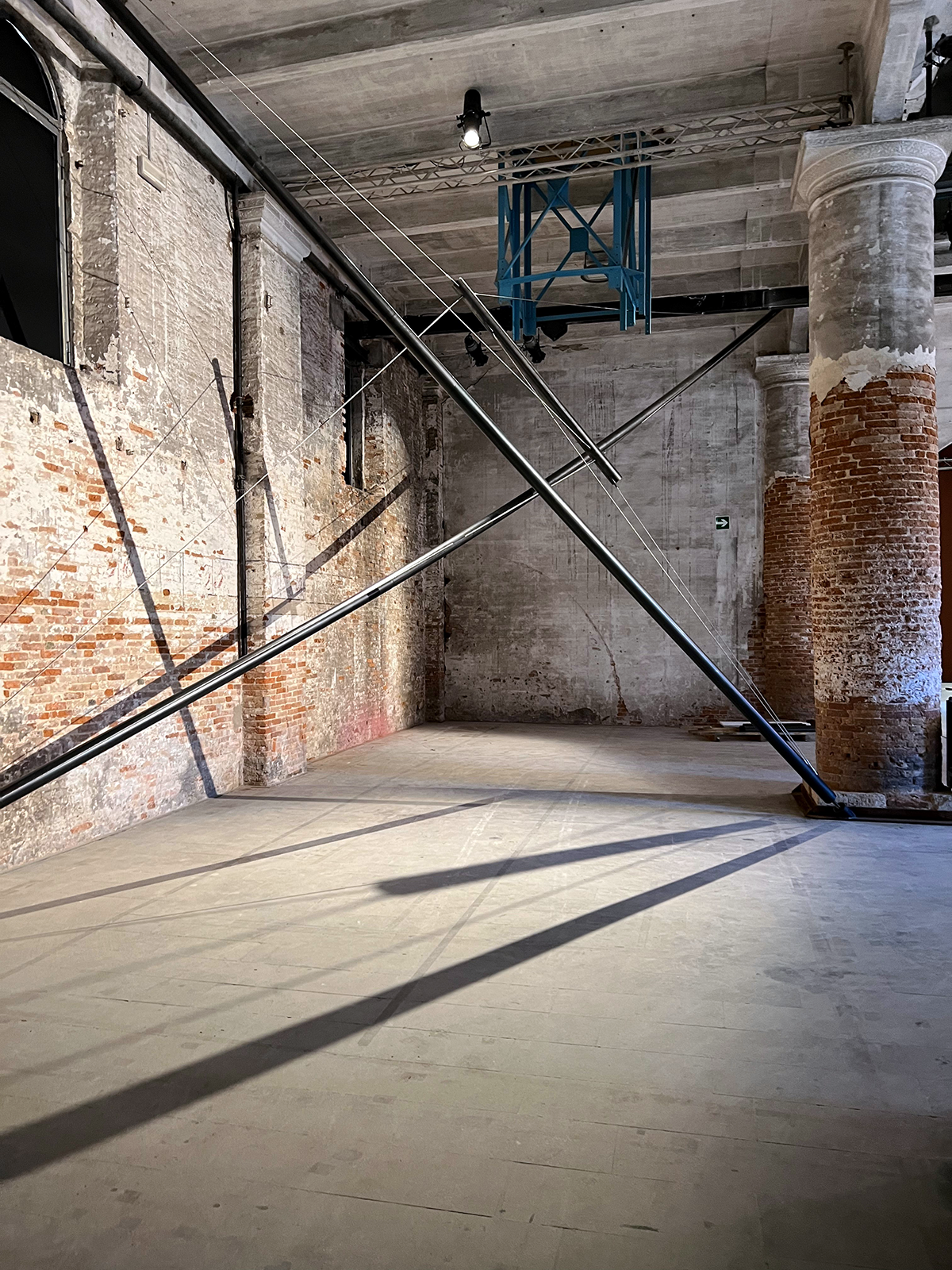
Drawing from critical texts by bell hooks, Dionne Brand, David Scott, AAP architecture faculty Tao DuFour, and others to consider a "figure seen twice," Dream The Combine's afterimages is a metaphoric construction of witnessing explored through drawing, namely the two-point perspective.
Two-point perspective is used to render three-dimensional geometry on a two-dimensional pictorial plane. Unlike the typical characterization on a surface, afterimages is an occupiable two-point perspective drawn in space. A central element is held in suspension by cords extending to two sets of vanishing points located along two horizon lines. This creates an open, lattice-like threshold visitors can approach and pass through.
The formal strategies employed grow from contemplation of the image, its afterimage, and memory as re-inscription. The afterimage is a retinal burn, a desensitization of optical cones that prevents the uptake of new information while vision is still being processed by the brain. It is a lag, a delay that causes the viewer to see things twice. The work displayed in Venice is the first in a cycle of installations in Chicago, Minneapolis, and at the American Academy in Rome.
Sweet Water Foundation: Emmanuel Pratt (B.Arch. '99)
chaord: Dangerous Liaisons, Arsenale and Forte Marghera
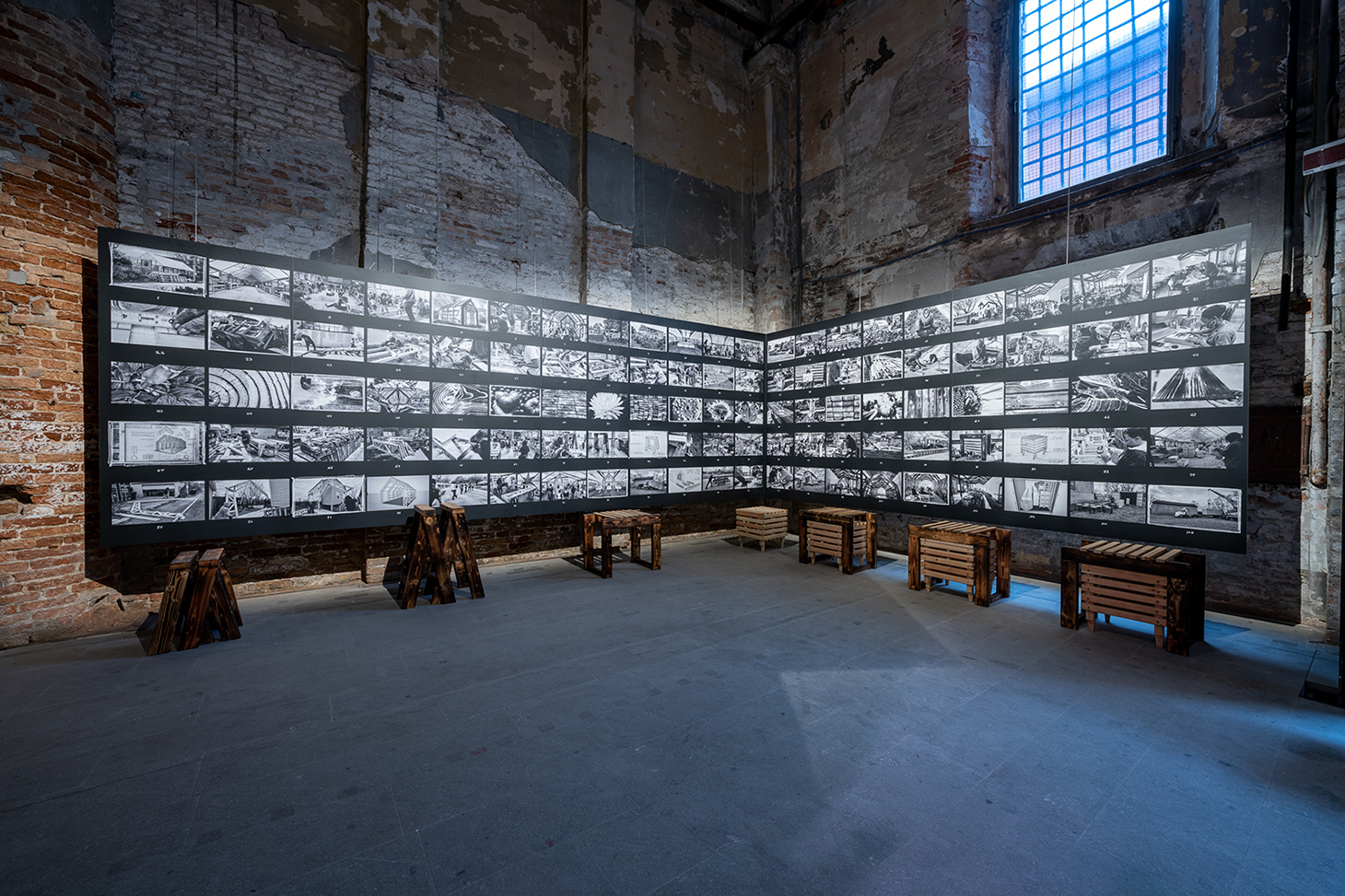
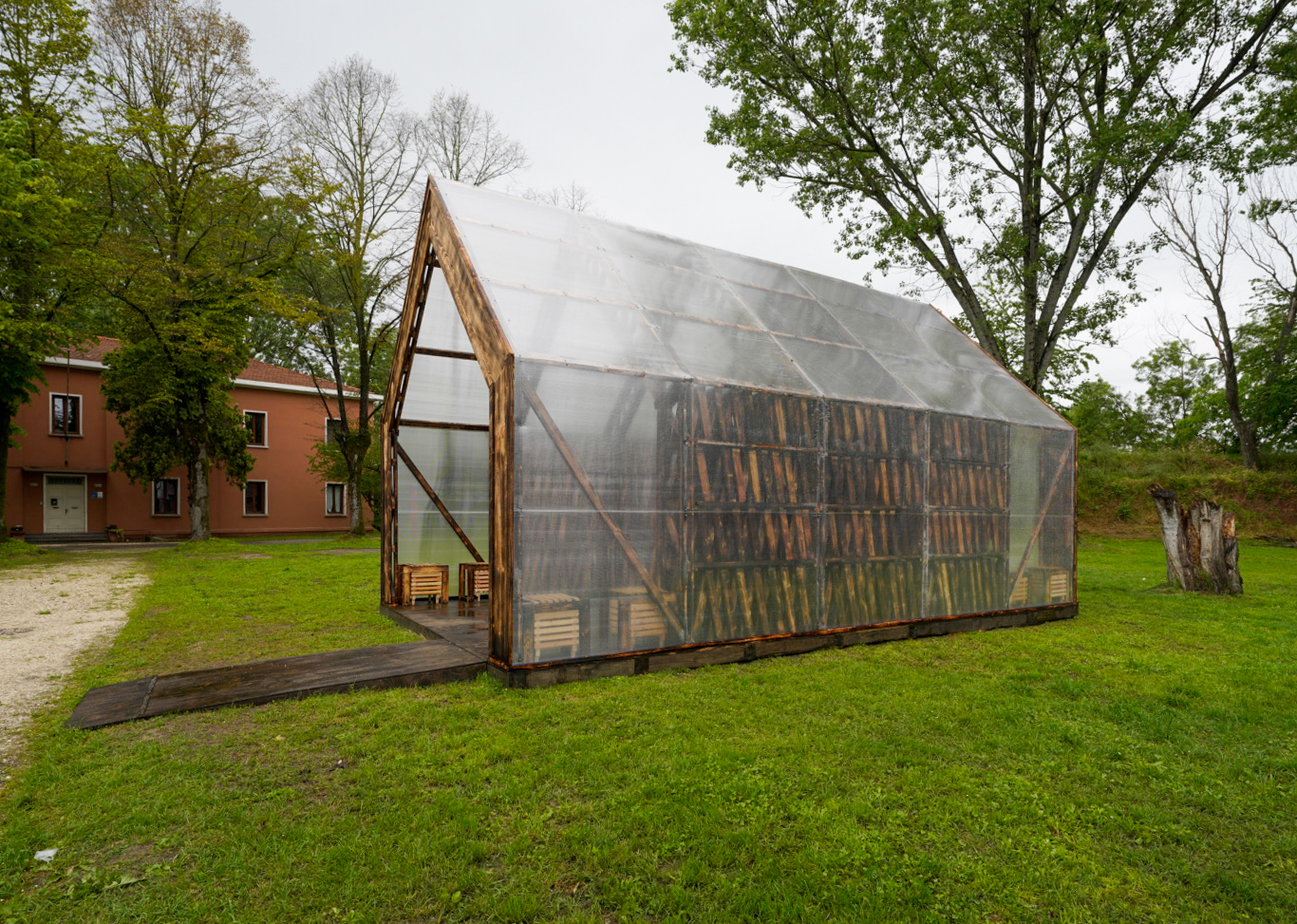
The term "chaord" is formed from a blend of "chaos" and "order." It is a diunital framework that embraces the logic of "both/and" and negates the dichotomous mindset of "either/or" that dominates form and function in the built environment. chaord is presented as an assemblage of designed objects and mixed media re-presentations of the Sweet Water Foundation's spatial praxis featuring a Meeting House, a laboratory, and a workshop designed as a multiscalar framework. At Forte Marghera, the primary site of the Sweet Water Foundation’s project, elements of the Meeting House façade are formed by nested modular seating objects designed as a lesson plan in urban ecology that celebrates reclaimed wood. Inside the Arsenale, chaord is re-presented via a multimedia collage of photographs, materials, and diagrams contextualizing the foundation's regenerative neighborhood development practice at the Commonwealth, their central location on the South Side of Chicago.
AAP Dean J. Meejin Yoon (B.Arch. '95), Eric Höweler (B.Arch. '94, M.Arch. '96), and Mabel Wilson, Cornell University Andrew D. White Professor-at-Large, in collaboration with Josh Begley and Gene Han
unknown, unknown: Mnemonic, Arsenale
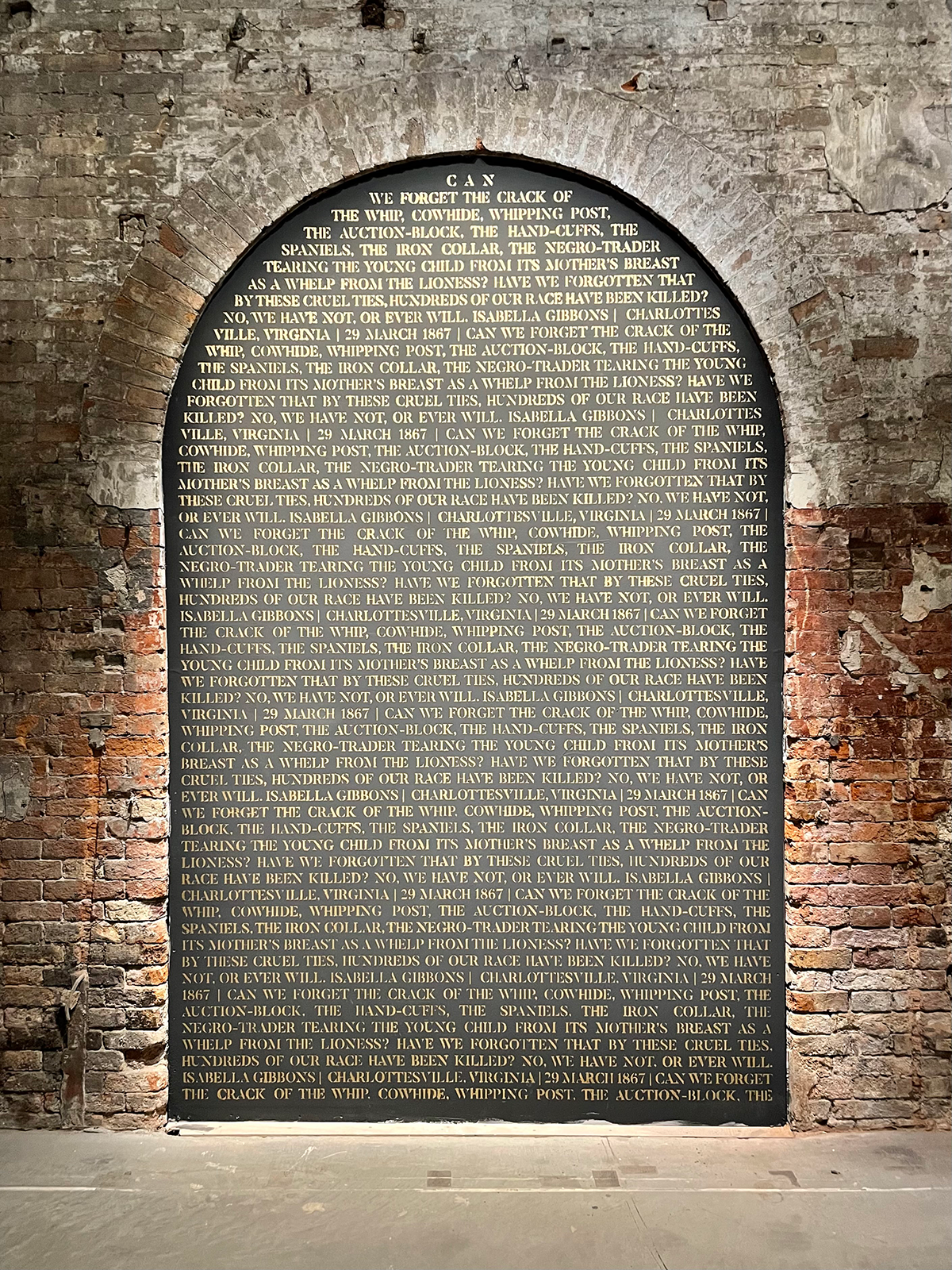
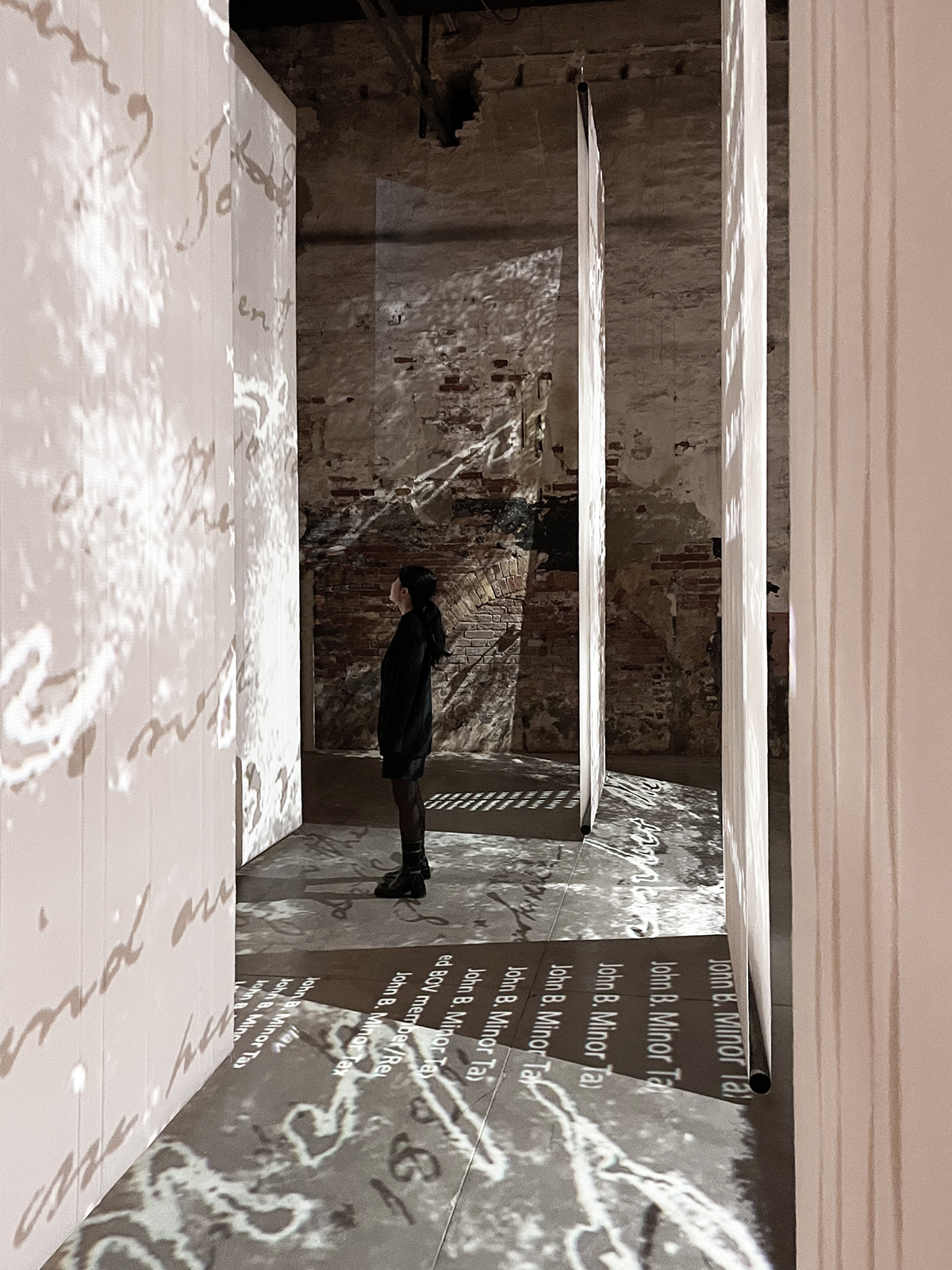
unknown, unknown is an immersive installation that constructs a space of light and sound to remember both named and unnamed members of the enslaved community at the University of Virginia in Charlottesville.
Yoon, Höweler, and Wilson's installation draws from archival research that informed the design of the Memorial to Enslaved Laborers at the University of Virginia which opened in 2020. unknown, unknown explores the archival absence and erasure of approximately 4,000 unknown and known community members who built, worked, and maintained the university from 1817 to 1865. In contrast to the West's typical stone or bronze monument form that uses figures, names, and dates to compose timeless historical narratives, unknown, unknown constructs an ephemeral sonic, visual, and haptic memorial. The immersive installation acknowledges the vast scope of racial violence that dehumanized Black men, women, and children, reducing the enslaved community to property owned, rented, and sold by the academical village's residents. Forming a counter-archive of imagery and sounds, unknown, unknown re-humanizes this community by rendering their unknowability in moments of refuge and spaces of liberation.
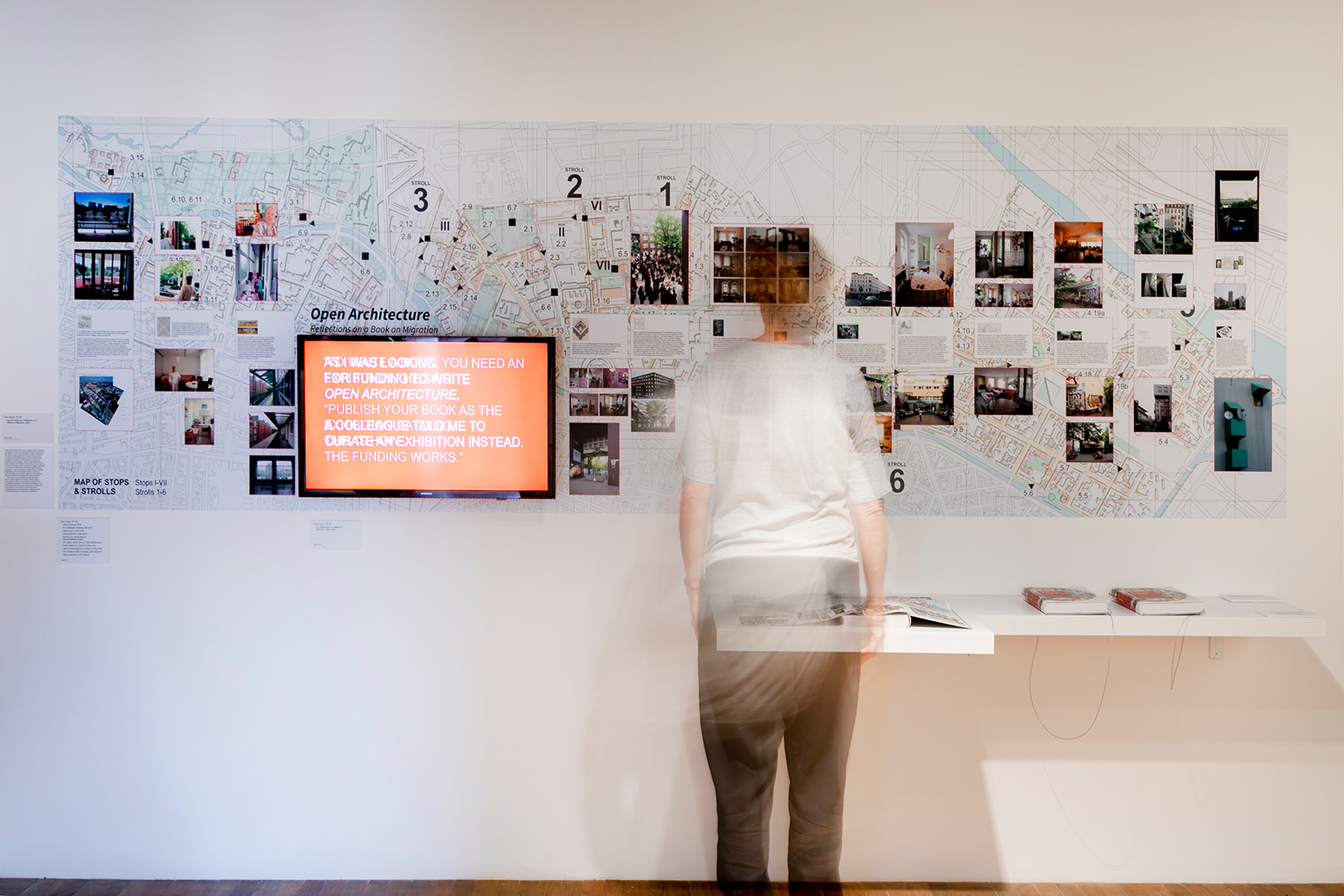
Installation view of Architecture Professor Esra Akcan's exhibition Open Architecture. image / Patricia Parinejad
In parallel with the Biennale, History of Architecture and Urban Development faculty Samia Henni and Esra Akcan bring critical histories to the fore this year. Henni, scholar, educator, and author of Architecture of Counterrevolution: The French Army in Northern Algeria and editor of Deserts Are Not Empty, will be one of fifteen international tutors invited to work with fifty students, early career practitioners, and academics from around the world as part of the first Biennale College Architettura.
Akcan, an educator and author of books such as Landfill Istanbul; Architecture in Translation; Turkey: Modern Architecture in History; Open Architecture; and Abolish Human Bans is taking part in the European Cultural Centre's (ECC) parallel exhibition Time Space Existence in Palazzo Mora. She invites viewers into her world as a scholar, exhibiting photographs, maps, and oral histories produced along with the research for her book Open Architecture, a study of the urban renewal of Berlin's Kreuzberg neighborhood that gives voice not only to architects and policymakers, but also to migrant inhabitants from Turkey. The display also reflects on this urban renewal in relation to the February 6, 2023, earthquake in Turkey. It includes a personal reflection on post-disaster healing through the scholarly work and family experience of the author.
Also participating in the ECC's Time Space Existence, architect Jay Valgora's (B. Arch. '85) Studio V will exhibit On the Edge, an installation comprised of architectural models, a four-channel video, and an artist's book, which encapsulates the studio's current investigations into the reinvention of the contemporary city.
The 2023 Venice Biennale runs from May 20 to November 26, 2023. Learn more about the featured work and planned events on the exhibition's extensive website.





